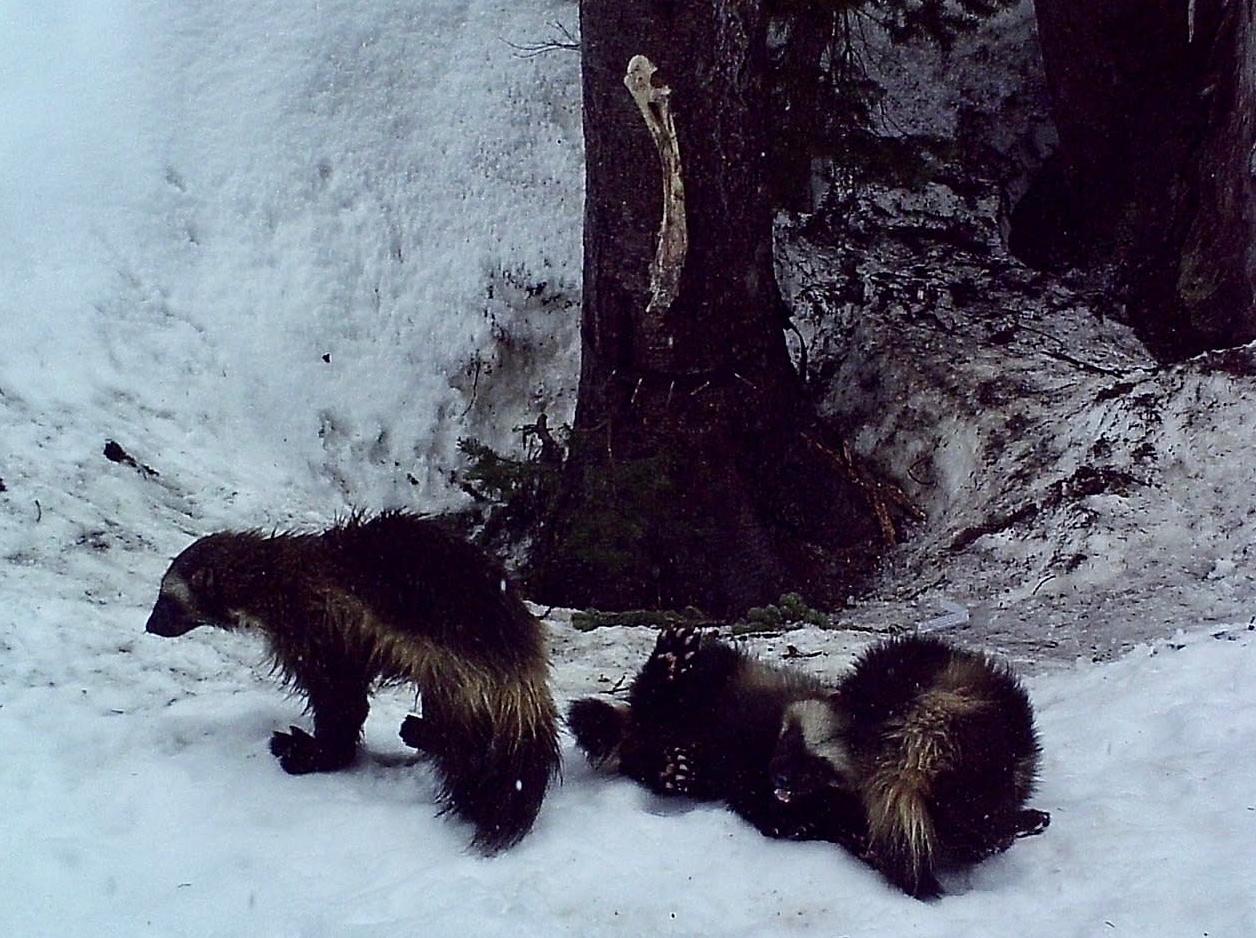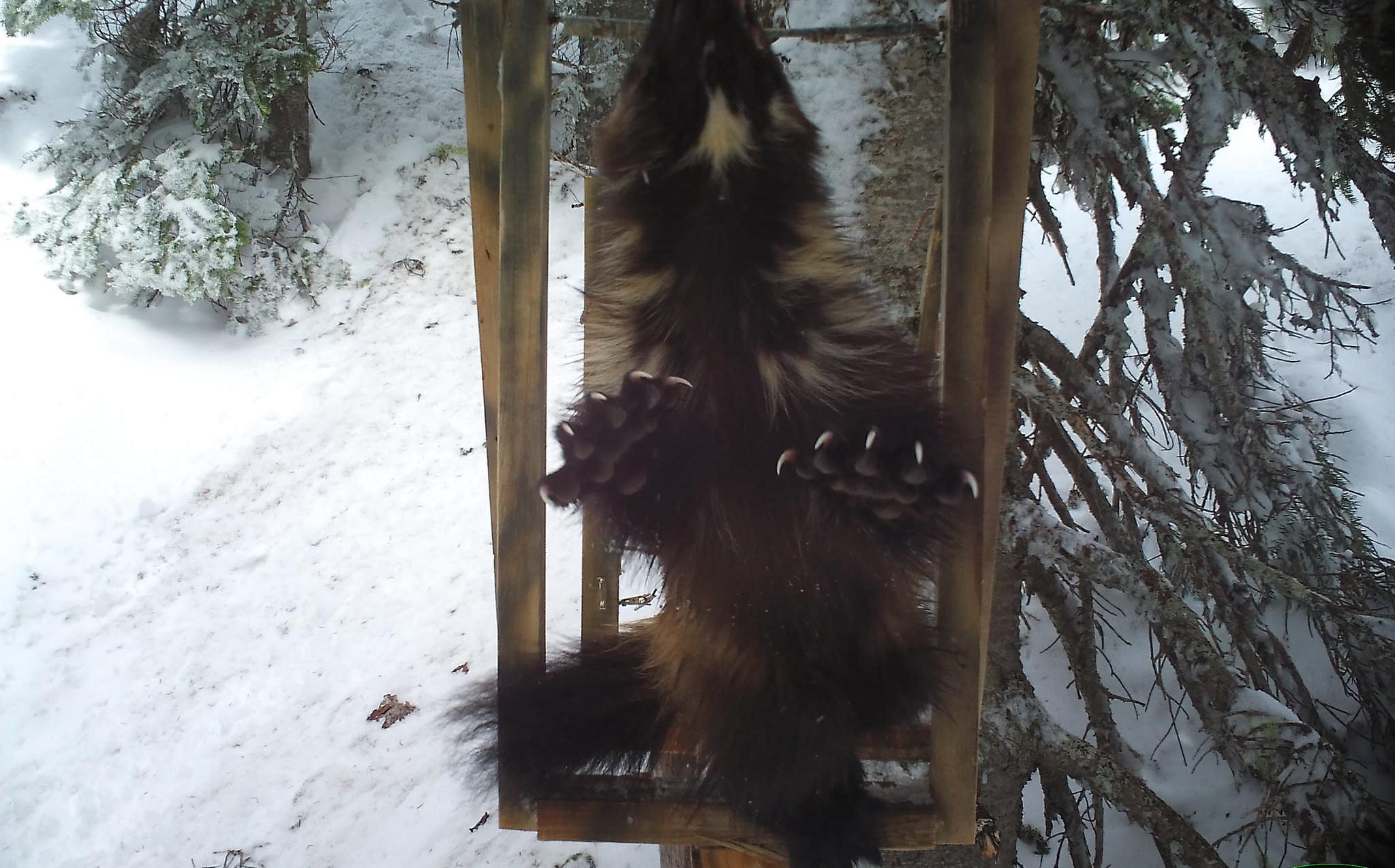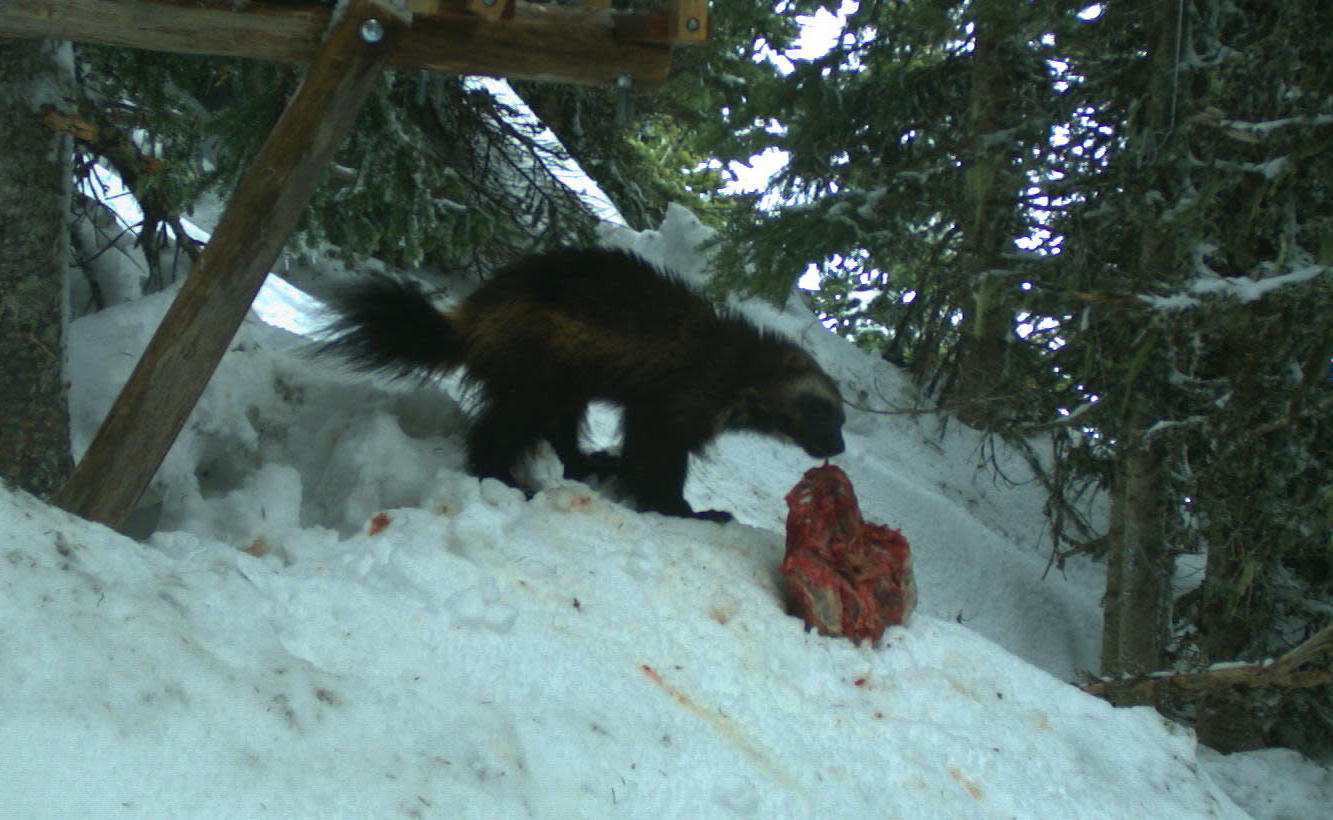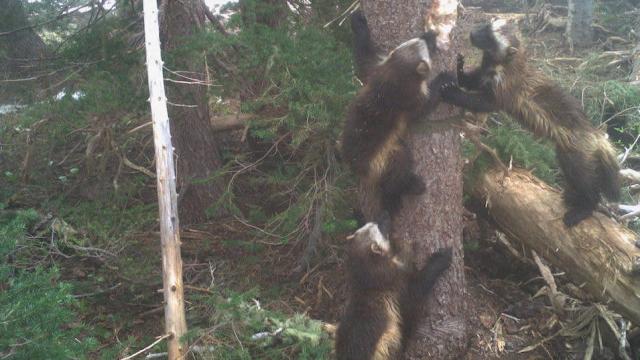Conservationists at Mount Rainier National Park in Washington State have spotted a wolverine mother and her two offspring, known as kits. A reproductive female hasn’t been seen in this national park for over a century, which suggests ecological conditions in the area are improving.
Wolverines, despite their popularity in the public’s imagination, are super rare. An estimated 300 to 1,000 individuals are thought to exist in the Lower 48, according to the National Park Service (NPS). Population density estimates for these solitary animals range from 6.2 individuals for every 1,554 square kilometres of high-quality habitat, and just 0.3 individuals for the same area of land in less suitable areas.
These animals have a voracious appetite and will eat virtually everything, from carrion, nuts and berries through to live prey such as mice, marmots, squirrels, hares, and even porcupines. As meat-eaters, wolverines fill an important ecological niche. For conservationists, population declines among carnivorous species signal a deteriorating food web, while the opposite holds true for their recovery.

Such could be the case with the return of wolverines to Mount Rainier, which hasn’t hosted a reproductive female in more than 100 years. As Chip Jenkins, Mount Rainier National Park’s superintendent, said in a press release, “when we have such large-ranging carnivores present on the landscape, [we know] that we’re doing a good job of managing our wilderness.”
The NPS the discovery of the wolverines to the Cascades Carnivore Project, led by conservationist Jocelyn Akins. This NGO, powered by scientists and volunteers, is dedicated to restoring the ecological vitality of the Cascade Mountains that run from British Columbia to northern California so that it can foster carnivores like wolverines, fishers, the Cascade red fox, and Canada lynx. Carnivores living at high elevations are often at risk owing to their specialised behaviours and sensitivity to climate change, according to the NPS.

Members of the Cascades Carnivore Project set up camera traps two years ago in hopes of identifying individual wolverines, as these animals can be distinguished by the distinct patterns on their chest. Photos captured by these cameras can also indicate the presence of a lactating female, which was the case here, as the freshly spotted wolverine mum is still nursing her kits. Conservationists are now hoping this is not a one-off sighting, but rather a sign that wolverines are returning to the national park.
The location of the camera traps are being kept secret to protect the animals from curious onlookers, but park visitors are being encouraged to submit photos of wolverines and their footprints for inclusion in the Mount Rainier online wildlife observations database.

Wolverines are famous for punching above their weight class, as they’re incredibly powerful for their size. They typically weigh between 20 to 40 pounds (9-18 kilograms), but will stand up to wolves and bears to defend their territory or a carcass. Much of their behaviour is pure bluster, however, with their dramatic hissy fits driving away potential threats.
As for humans having to fear wolverines, park ecologist Tara Chestnut had this to say in the press release: “Wolverines are solitary animals, and despite their reputation for aggressiveness in popular media, they pose no risk to park visitors. If you are lucky enough to see one in the wild, it will likely flee as soon as it notices you.”
Good to know, but I have to be honest — if I were “lucky” enough to see one in the wild, I’ll be the one fleeing the scene. Glad they’re back in the park, though. This is a big win for conservationists.
